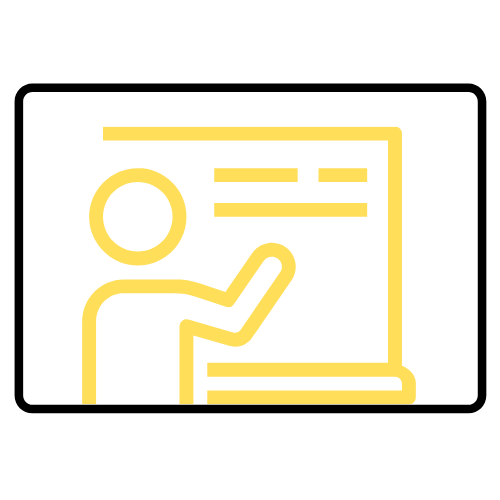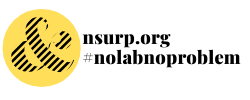Apply here to be a NSURP 2024 mentor!
Mentor applications are due May 1st, 2024.

Want some pointers on giving a great virtual experience, we have you covered!
The NSURP initiative wouldn’t be possible without amazing mentorship from microbial scientists, so from the bottom of our hearts, thank you for your interest! You’ve probably got some questions, and hopefully the FAQ below, as well as the Resources section further down the page, can get you the answers you need to convince you to come on board!
- What does being an NSURP mentor entail? Many of you will have supervised summer undergraduate research placements before; this is pretty similar. The big difference? The whole project and all your communication with your student will be done remotely. This obviously creates a few challenges – it means that lab-based projects aren’t possible, and it does mean yet another series of video conferences – but it also creates amazing opportunities. You can mentor a student from any institution – no need for you and your student to be at the same university or even in the same city or country! You can also use this a chance to try out other types of projects, like library-based literature reviews, computational/bioinformatics work, or analysis of existing datasets. Feel free to get creative!
- How much of my time will this require? We acknowledge this is an unusual time for so many of us and that we are adapting to new ways of running our research groups, and that devoting time and energy to an additional project beyond the responsibilities you’re already shouldering is a big ask. But we hope that the remote arrangement that students and mentors will be working under will mean that you can communicate efficiently and effectively through a range of different channels, from videoconferencing to Slack to email, and that this makes remote mentoring arrangement a light time commitment. At minimum, we expect mentors to meet with their students at least three times during the project (a kick-off meeting, a mid-point meeting, and a final meeting), and to be available for email/Slack contact and ad hoc brief meeting requests as the student needs. It would also be great if you could include your student in lab meetings.
- Can I have a postdoc or other lab member mentor my student? Absolutely – this is a great opportunity for trainees in your lab to gain mentorship and leadership experience! All we ask is that you confirm this arrangement with the NSURP organizers, that you join your lab member in the project kickoff and close-out meetings, and that you be willing to provide a reference letter for your student in the future.
- I am not running a microbiology lab – can I still participate? At this time, due to limited organizational resources, we are focusing on microbiology-based projects. But please still sign up – if we can facilitate future connections, we will!
- How long does the research project last? Ideally, projects are two months long, running from approximately June 14 through August 6th 2021. Depending on interest, we may open a second intake window for month-long projects running mid-July to mid-August. Projects can also continue beyond the mid-August end date at the discretion of the student and the mentor.
- What sort of project description should I submit? Because this experience is entirely online, post a project (or projects!) that can be done remotely. You can be as prescriptive as you want with the project – if you have something very specific in mind, feel free to get detailed in the description your submit. If you have a general idea but nothing set in stone, that’s okay too – you can work with your student to craft something that meets your needs and their interests. THIS IS NOW A FULL TIME PROGRAM FOR STUDENTS, including online seminar attendance, so use this as a guide. We will try to match those who can work more, with those projects that are notated as longer.
- Does the type of academic institution that I work at matter? Do I have to be in the US? Big or small, primary undergraduate institution or university with 50,000 students, all are welcome to submit projects and be NSURP mentors. We accept mentors from anywhere in the world!
Suggestions for Supervisors
Running a Successful Remote Undergraduate Research Experience
- Clearly scope the project, deliverables, and timelines: With these projects happening remotely, a lot more structure is required to ensure that they run smoothly for both you and your student. You should choose a project that can be completed within 8 weeks, recognizing that many students may only have a few hours a week to devote to the work. Literature reviews, computational/bioinformatics projects, or analyzing existing datasets are all well-suited to being done remotely. Projects that require hands-on work, substantial interaction with lab members, or the use of software with licensing fees or specific hardware requirements should be avoided.
- Draft a project contract. This should contain a project description, which clearly articulates what the problem is and why the answer is important – you need to demonstrate to the student that their work on this question matters. This contract can be drafted after engagement with the student (see point 3). It should contain a list of activities that the student will pursue, as well as a list of deliverables and an associated timeline. You may also want to include an “expectations” section in your contract, outline what the student can expect of you, and what you, in turn, expect of them. The contract should also establish how the student will be acknowledged for any work arising out of the project – for example, if the work leads to posters, presentations, and publications.
- Ensure that as many things as possible the student might need are in place at the project outset: With the short timeline for these projects, it’s vital that the data, computational resources, or other materials that the student might need to work on the project are already in place before you advertise the project and recruit a student. If a project relies on data that you are expecting in the near term from another lab member or a collaborator, it is not appropriate for this initiative – 2020 taught us to expect the unexpected when it comes to disruptions, so data you think might be coming next week could turn out to be very delayed.
- Set up a project kick-off meeting, allowing 60 minutes: The project kick-off meeting is a chance for you to connect with your student in person – to learn more about their background, passions, and future plans, to discuss the project contract and expectations in more detail, and to establish a communications plan to see you both through the remainder of the project. Aim for a video call so you can have face-to-face communication, and consider preparing a short presentation introducing your student to your area of research. Students love hearing about career paths, so you may want to spend some time discussing how you got to where you are today.
- Establish a rhythm of regular communication, on the cadence that works for you and the student and using the medium that works best: During the initial call, set up a plan that describes how and how often you’ll communicate with your student during the project timeline. There are many options available, from having them participate in regular lab meetings, asking them for a weekly or bi-weekly ‘work in progress’ email update, adding them to the lab Slack, Teams, or Whats App, scheduling a regular 1:1 (call or video), etc – do what is best to maintain communication and keep project momentum, while avoiding burnout and over-reporting.
- Have a mid-point check-in meeting: Around the 4-week mark, schedule a specific video call with your student for the sole purpose to check in on their project progress and how the experience is going for them (not just project maintenance). Be sure to ask if there’s anything you as a supervisor can do to make their experience better – they may have some great ideas, but may be reluctant to share unless asked and encouraged.
- Before the project ends, reconfirm the deliverables and timeline with your student: The midpoint meeting, or shortly thereafter, is the perfect time to reconfirm what deliverables you expect the student to produce and on what timelines. These may have changed since you both agreed to the original project contract.
- When the project is finished, share meaningful feedback with the student: Once the deliverables are complete and the summer research experience has drawn to a close, send an email to your student thanking them for their efforts, and providing feedback on their work. Pointing out strengths and accomplishments is always welcome, but don’t be afraid to provide constructive feedback too, suggesting areas that the student could work on developing further in their next research project.
- Support your student’s final presentation: Your student will be given the chance to share their results in the digital format of their choice (poster, report, narrated poster or slide video presentation, other creative medium) on the NAME TBD website – be available to review and approval their presentation materials quickly, and use your connections and social media network to share your student’s work.
- Write a letter of reference for the student while the experience is still fresh in your mind: Your student will most likely list their experience with you on your CV and will probably want a reference letter from you to use on things like scholarship applications. Draft this now, while the experience is fresh in your mind, and have it handy for when they come to you with a future request.
Resources
The following websites have content that you might find useful in planning and preparing for your mentorship experience:
- The American Psychological Association has a useful resource on teaching and supervising during COVID-19, and the University of Calgary’s Faculty of Graduate Studies has prepared a helpful guide for supervising trainees during the COVID-19 pandemic.
- Dr. Kat Milligan-Myhre collected thoughts from trainees on what they want their supervisors to know about working during the pandemic. Read the thread for some important, thoughtful, and moving insights into what your students are going through now.
- ABRCMS, the Annual Biomedical Research Conference for Minority Students, has a wonderful array of resources to help your and students navigate both the pandemic and research in general:
- Committing to mentoring BIPOC students also means doing the work when it comes to anti-racism. Some resources that you may find helpful in your learning might include:
- This checklist for white allies, created by Kathryn Russell, is a useful tool for reflecting on your own behaviors
- dRworks – the Dismantling Racism workshop project – has a website with a number of resources; the piece by Tema Okun on how elements of white supremacy culture manifest in organizations provides insight into recognizing and overcoming some of these traits
- The Racial Equity Tools website is a treasure trove of material, and worth exploring in-depth
- The Art of Virtual Mentoring in the twenty-first century for STEM Majors and Beyond
